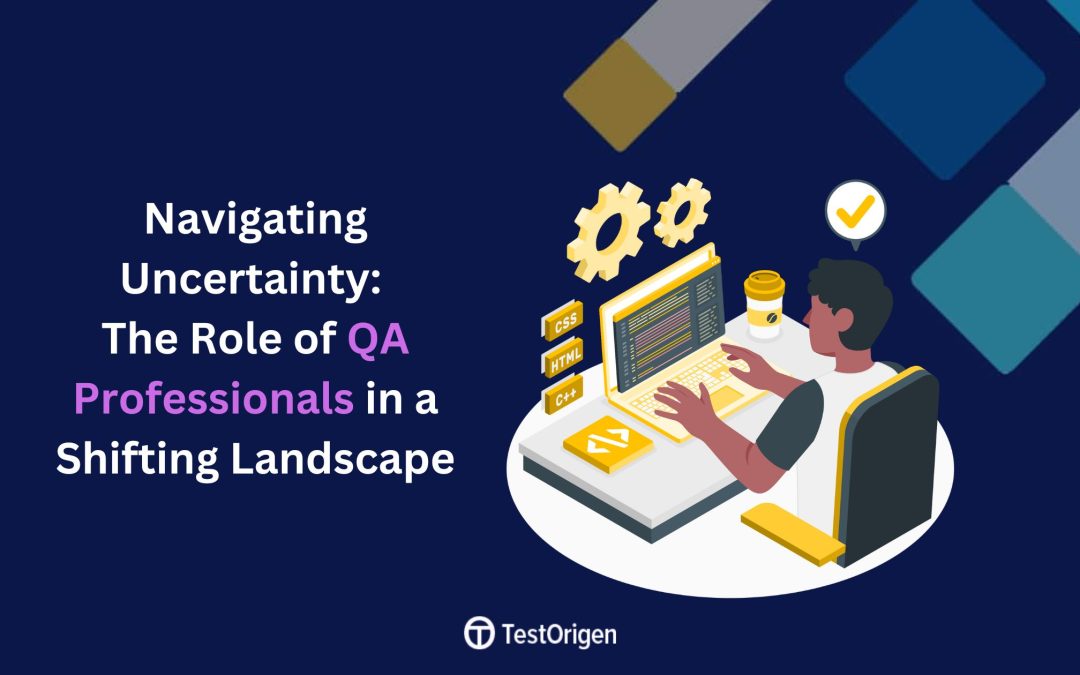In the fast-paced world of technology, Quality Assurance (QA) professionals find themselves at the forefront of navigating uncertainty. As industries evolve, software development methodologies shift and new technologies emerge, QA professionals must adapt and redefine their roles to ensure the delivery of high-quality products. In this dynamic landscape, the ability to navigate uncertainty becomes a crucial skill set for QA professionals.
Embracing Agile Methodologies: A Paradigm Shift
The traditional waterfall model of software development, with its linear and sequential approach, has given way to more agile methodologies. Agile emphasizes collaboration, adaptability, and responsiveness to change. QA professionals, once confined to the end of the development cycle, now find themselves integrated into cross-functional teams working in iterative cycles.
This shift requires QA professionals to be more dynamic in their approach. Instead of relying solely on exhaustive test plans, they must engage in continuous testing, providing feedback at every stage of development. Embracing uncertainty means understanding that requirements may change, and QA processes must be flexible enough to accommodate these changes without compromising on quality.
Automation: A Pillar in Uncertain Terrain
Automation has become a cornerstone in navigating uncertainty within the QA landscape. As software projects become more complex and timelines tighter, the need for rapid and reliable testing increases. Automation allows Professionals to streamline repetitive tasks, ensuring faster test execution and freeing up time for more complex, exploratory testing.
However, the challenge lies in knowing where to automate and where to rely on manual testing. The dynamic nature of agile development means that requirements and functionalities may change frequently. QA professionals must carefully evaluate which tests are best suited for automation, considering factors like stability, repeatability, and the likelihood of change. Striking the right balance between automation and manual testing is essential for an effective QA strategy.
Continuous Integration and Continuous Deployment (CI/CD): Shaping QA Practices
CI/CD practices have become integral to modern software development. Continuous integration ensures that code changes are regularly merged and tested, while continuous deployment automates the release process, allowing for faster and more frequent product releases. In such an environment, QA professionals must align their testing processes with the pace of development.
For QA, this means establishing a robust testing infrastructure that integrates seamlessly with CI/CD pipelines. Running automated tests with each code commit ensures that issues are identified early in the development cycle, reducing the likelihood of major defects reaching production. Professionals must become adept at working within these rapid deployment cycles, adjusting test strategies to meet the demands of CI/CD.
Shift-Left Testing: Anticipating Challenges Early On
As the software development life cycle accelerates, QA professionals are increasingly adopting a “shift-left” approach. This involves moving testing activities earlier in the development process, allowing for the identification and resolution of issues at their inception. By collaborating with developers from the outset, QA professionals can gain a deeper understanding of the application’s architecture and design, enabling more effective test planning.
This proactive approach to testing requires QA professionals to be involved in requirements discussions, code reviews, and design sessions. It’s about anticipating challenges before they become roadblocks and fostering a culture of quality throughout the entire development process. Embracing uncertainty means acknowledging that changes are inevitable, but with a shift-left approach, QA professionals are better equipped to handle them.
Adaptability and Continuous Learning: A QA Imperative
In an ever-changing landscape, adaptability is a non-negotiable trait for QA professionals. Keeping pace with the latest technologies, testing tools, and industry trends is essential. Continuous learning is not just a personal development initiative; it is a professional necessity.
Moreover, professionals need to be proactive in seeking out opportunities to enhance their skill set. Whether it’s learning a new automation tool, exploring a different testing methodology, or staying updated on industry best practices, the commitment to continuous learning positions QA professionals as invaluable assets in a rapidly evolving field.
Collaboration Across Disciplines: Breaking Silos
Navigating uncertainty is not a solo endeavor. QA professionals must break down silos and foster collaboration across disciplines. Effective communication with developers, product managers, and other stakeholders is paramount. QA professionals need to actively participate in cross-functional teams, ensuring that testing is integrated seamlessly into the development process.
Collaboration extends beyond daily stand-ups and sprint planning meetings. Professionals should advocate for a shared understanding of quality across the entire organization. This involves educating colleagues about the value of QA, dispelling myths about testing being solely a gatekeeping function, and emphasizing the collaborative nature of ensuring product quality.
Conclusion: The Resilient QA Professional
In the shifting landscape of software development, QA professionals are the guardians of quality. Navigating uncertainty requires a multifaceted approach, blending agility, automation, continuous learning, and collaboration. The resilient QA professional is not just a tester; they are a strategic partner in delivering high-quality software in an ever-evolving environment.
As industries continue to innovate, QA professionals must embrace change with open arms, viewing uncertainty not as a hindrance but as an opportunity for growth. By staying adaptable, fostering collaboration, and proactively engaging with emerging technologies, QA professionals can not only navigate uncertainty but thrive in the face of it, contributing significantly to the success of the projects and organizations they serve.






Recent Comments